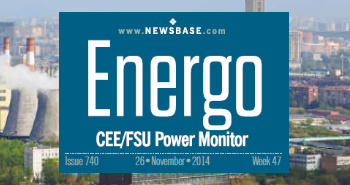Ukraine’s cabinet introduces interim regulation of natural gas prices
Ukraine’s cabinet decided at its weekly meeting on January 13 to introduce a regulated price for natural gas for households at the level of UAH6,990/tcm ($250/tcm), PM Denys Shmyhal reported the same day.
This is the lowest price on Ukraine’s recently launched energy exchange and about 30% below the price offered by private suppliers to households, Shmyhal said. The price will be introduced for the period of quarantine restrictions in Ukraine, or through the end of heating season, which is when natural gas consumption peaks. Meanwhile, he assured the public that the regulated price “does not mean the government is stepping out of the liberalized gas market.”
“This is a populist move in response to public protests in several key regions, including Kharkiv, related to recent gas price hikes for households. To score political points with them, the government is attributing its decision to concern for tough economic conditions under the nationwide lockdown imposed on January 8 to cope with the coronavirus pandemic,” Alexander Paraschiy of Concorde Capital said in a note.
“The biggest threat from the announced regulation is that it does not comply with Ukraine’s commitments to the IMF “to apply a market-based pricing scheme” for natural gas “without any ceiling.” Recall, earlier the IMF insisted that natural gas prices in Ukraine should be based on the import parity principle (EU hub price plus delivery costs to Ukraine).
“In this case however, analysts believe the IMF might not consider this regulation as a breach of Ukraine’s commitments. Firstly, it has been declared to be temporary, with the government characterizing it as a measure to support households during the lockdown period.
“Secondly, Ukraine's liberalized gas market could become recognized as inefficient since its introduction in 2H20, owing to large possibilities for manipulations from private traders. Such a regulation might temporarily limit the inefficiencies before they are removed in other way.
“Thirdly, the discussed earlier import parity principle for gas pricing in Ukraine does not look necessary any more, as Ukraine has accumulated enough natural gas in storage to avoid any imports for a couple of years. For instance, the current annual consumption of gas in Ukraine is below 29bcm, which can be covered by about 20bcm of domestic production and use of gas stockpiles (22.9bcm of natural gas that is currently in Ukraine’s underground storage).
“The key question, however, is who will pay for this cheap gas. The declared price, for instance, is below the price of UAH7,326/tcm paid by Naftogaz to Ukrnafta in the recent debt settlement deal, and below the price of UAH7,220/tcm at, which Naftogaz is selling gas to households in January. It looks like any additional losses from the government’s initiative (if any) will be laid on Naftogaz (NAFTO), which is the gas seller of last resort,” Paraschiy concluded.


Follow us online